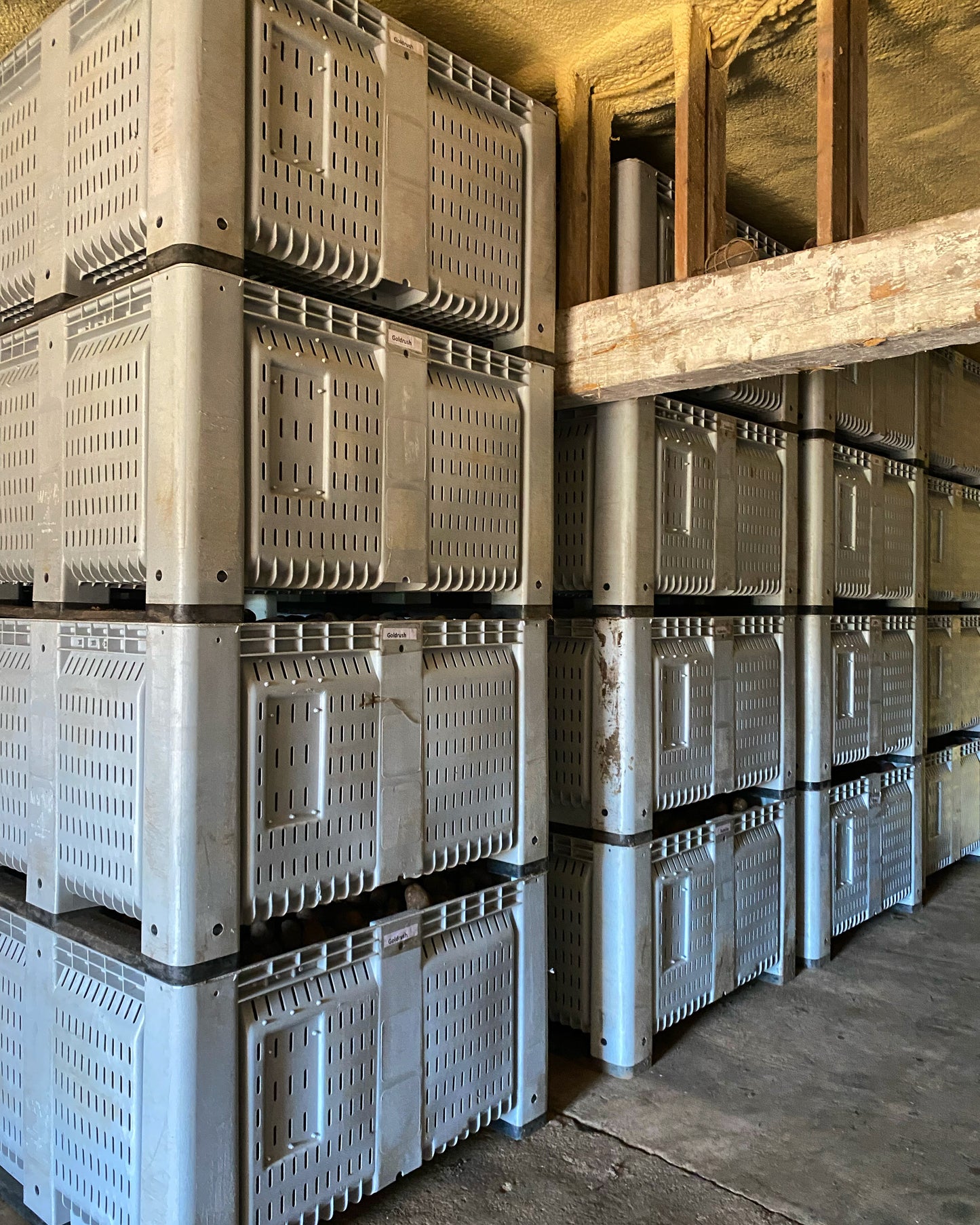
At Mythic Farm, we store our potatoes in a modern cooler, set in an old dairy barn. When Barb and David were searching for land to start Vermont Valley Community Farm in the early 90's, one of Barb's requirements was a barn. This eliminated some potential locations, but eventually they found the farm they were looking for. The barn has seen many additions and has required major maintenance over the years. The barn has lost some of its character with the jet crete foundation and the metal siding, but it may be able to stand for another 100 years, unlike many of the collapsing barns in Wisconsin. One of my first memories of working on the farm is, along with my friend Matt, shoveling out decades of old cow manure in the lower level of the barn where the potato cooler is now located. One of the many improvements that the barn needed was a new floor in what was the hay loft, there was very little floor left in part of the barn and there was always the risk of there being nothing but air below the hay. When the floor was replaced, we raised the floor to create extra height for the potato cooler.
Our cooler uses a condenser and evaporator to keep the cooler cool and on a rare occasion a baseboard heater to keep the cooler from getting too cold. Potatoes put off enough heat that it takes an extreme stretch of cold weather for us to need to heat the cooler. Our barn is built into a hill, so half of the cooler is underground like an exposed basement and the ground helps to regulate the temperature of the cooler.
We aim to keep our potatoes at 38 degrees, in complete dark and at 95 % humidity. These conditions allow them to enter and remain in dormancy, so we have a high quality, organic seed potatoes to ship in the spring. These conditions will ensure a quality potato in the spring, but the harvest and initial handling also play a huge factor in how potatoes store. Ideally there is no more than a 10 degree difference between the temperature the potatoes are at when they come out of the field and the temperature the cooler is at. We have our cooler set at 55 degrees when we are harvesting our potatoes, if we only harvested our potatoes when it was 65 degrees or cooler we would never get our potatoes out of the ground. But we are very conscious of the temperature when harvest and stop harvesting once the temp is in the mid 70's. If potatoes are treated nicely at harvest, they are much more likely to store well. Once all of our potatoes are out of the ground an in storage, we bring the temperature down to 38 degrees. We do this very slowly, bringing the temperature down 1 degree every other day. Some varieties store much better than others, but if they are treated right all of our varieties, even early varieties like Red Gold and Dark Red Norland, can be in excellent condition 6 months after harvest. Very good storage varieties like Yukon Gold usually don’t look much different than when they entered storage, once we turn off our cooler in June. The longer potatoes have been out of the ground, the more they are ready to start growing. A potato that is freshly harvested can be in your pantry for weeks without sprouting, but in the spring the same potato is ready to grow and will start sprouting within day of being in light and warmth.
The better you can mimic ideal storage conditions, the longer your potatoes will last into the winter and spring. Darkness is very important, light will both cause potatoes to begin to sprout and to green. White and yellow skinned potatoes are more prone to greening, especially Kennebec and Austrian Crescent, but all potatoes will eventually green if left in light. While we aim for 38 degrees for seed potatoes, it is okay if they are at slightly warmer temperatures. For fresh market and chipping commercial growers will store their potatoes in the mid 40’s. Even a cold part of a basement can be a good place to store your potatoes if you don’t have a better option as long as they are kept out of the light. Root cellars have been used to store root crops since long before refrigeration was even an idea, and are another way to mimic ideal storage conditions. Potatoes are a forgiving crop to store short term, but the better you treat them starting at harvest, the longer you will have high quality potaotes in storage.